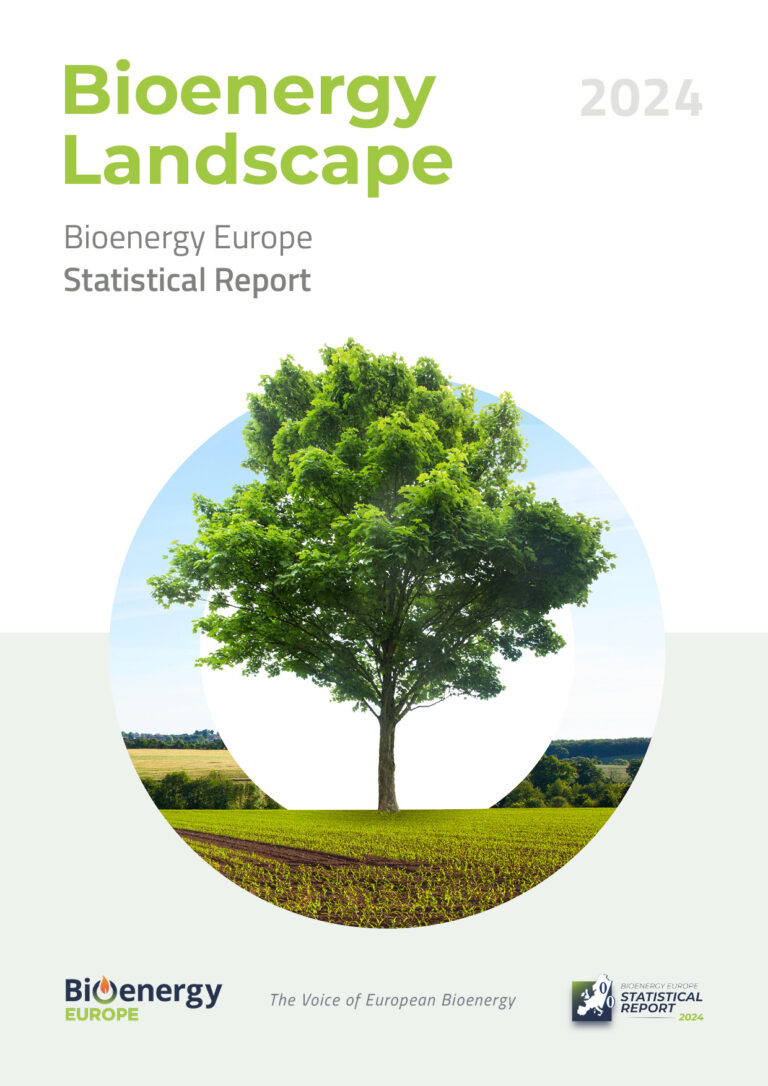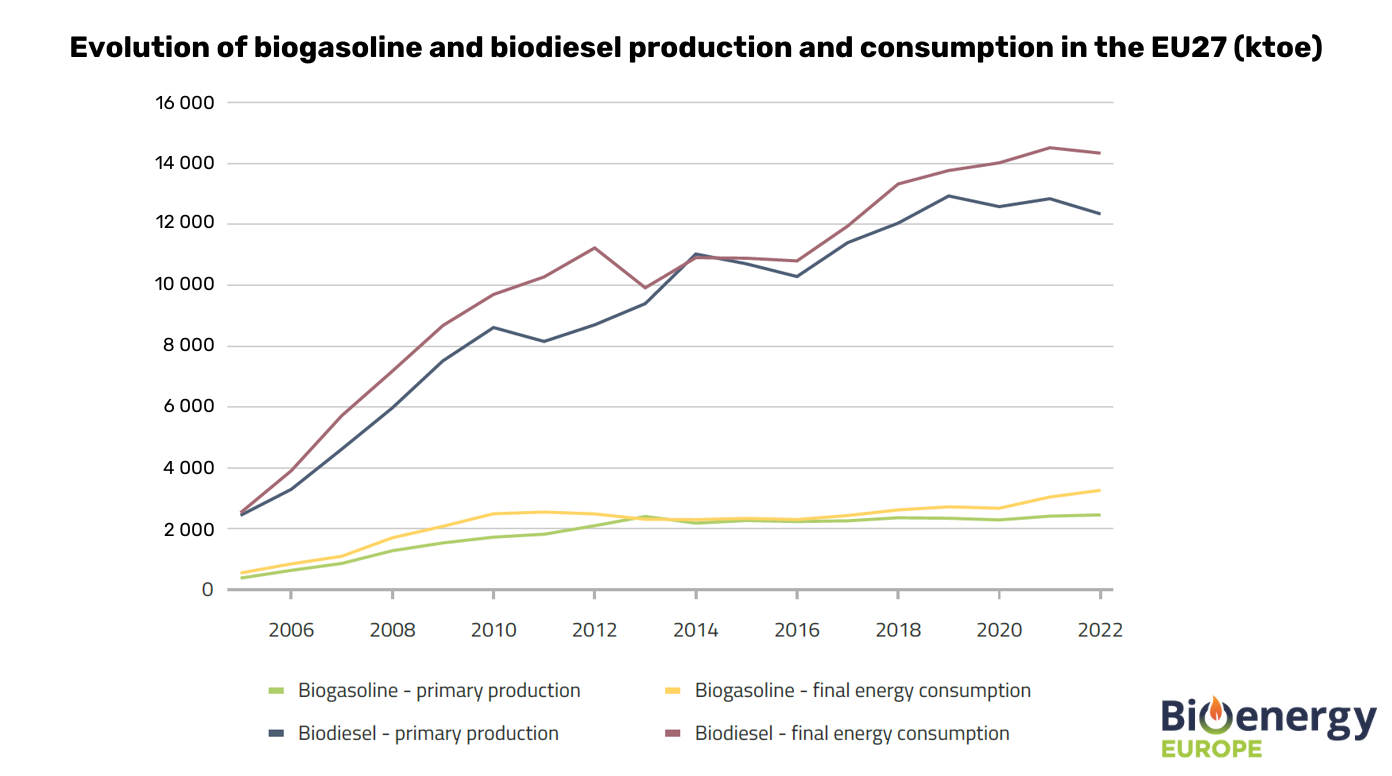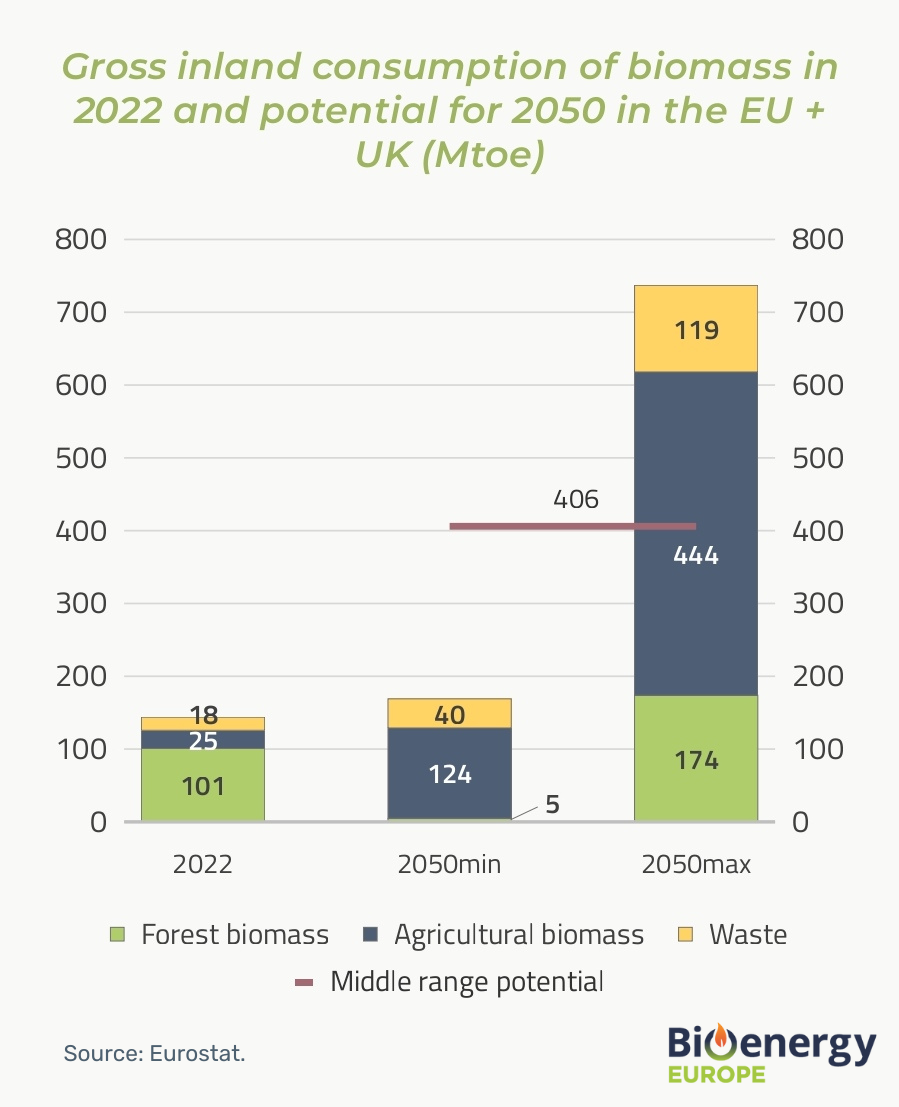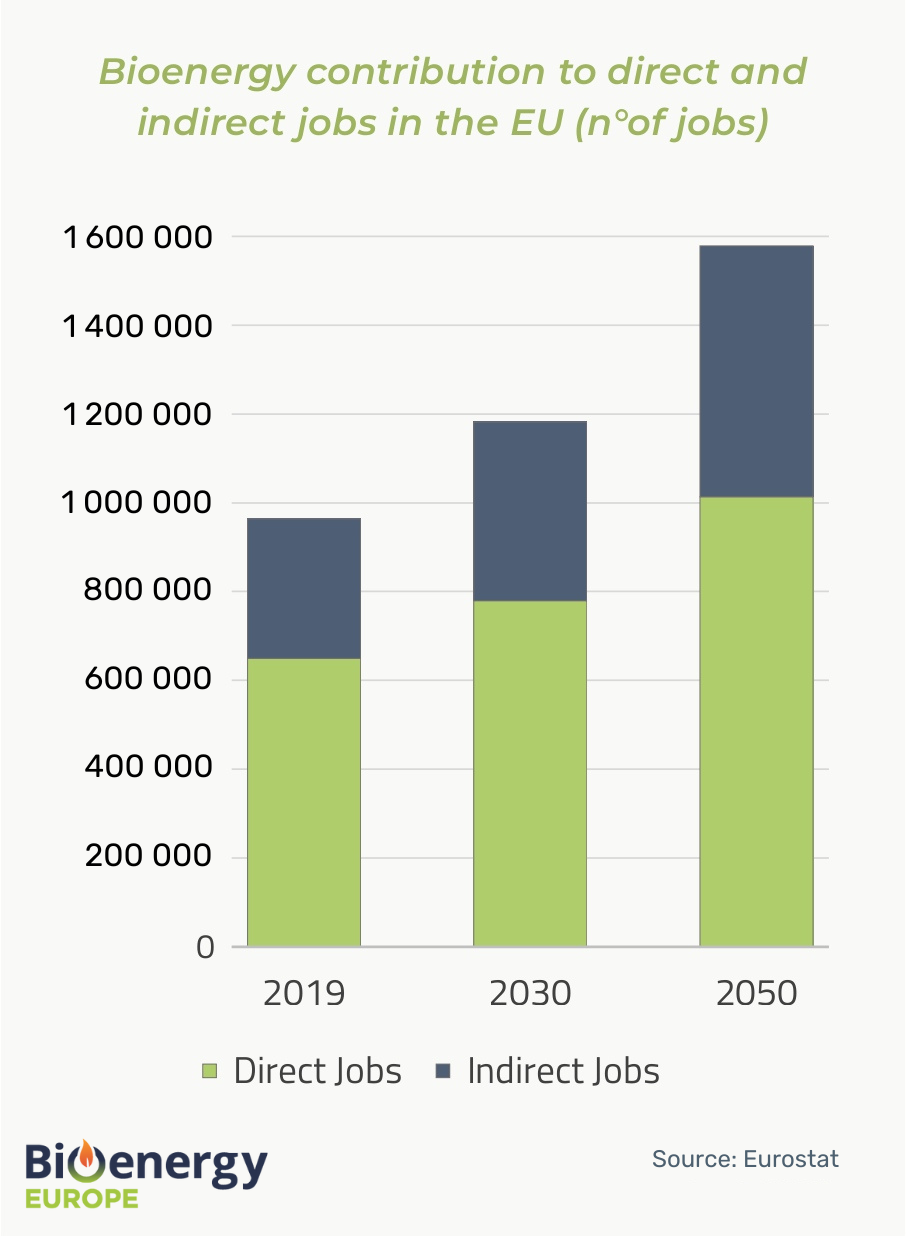 The Bioenergy Europe has published a new statistical report Bioenergy Landscape 2024, which provides a detailed analysis of the role of bioenergy in the European energy sector.
The Bioenergy Europe has published a new statistical report Bioenergy Landscape 2024, which provides a detailed analysis of the role of bioenergy in the European energy sector.
As a reminder, this review is logically divided into three parts. We are currently publishing the third and final part. Parts one and two are already available for viewing on the SAF platform. In this article, we will look at the state of the biofuel, biogas and biomass supply sectors, as well as the socio-economic contribution of the bioenergy sector.
Biofuels
Biofuels play a crucial role in the decarbonization of the EU transport sector, where almost 94% of energy consumption is based on fossil fuels (2022 data: 92.8% oil and oil products and 0.9% natural gas). In 2022, biofuels accounted for 4.8% of energy consumption in transport, while electricity accounted for 1.5%. Despite the relatively low absolute consumption, renewable electricity for electric vehicles has shown significant growth – five times over the past five years. However, the declared electricity consumption of vehicles is significantly overstated due to the use of coefficients that misrepresent the actual figures. In 2022, electricity consumption in transport amounted to 5471 ktoe, while biofuels reached 17140 ktoe.

Source: Bioenergy Europe.
Compliant biofuels are classified by the EC into two main categories based the type of material used to produce them and therefore the fuels they can be blended with: biodiesel and biogasoline.
Biodiesel is typically produced from oils and fatty acids, making it suitable for blending with diesel fuel. In contrast, biogasoline is derived through the fermentation of sugars to produce ethanol or its derivatives, which are blended with gasoline.
The consumption of compliant biofuels has grown significantly over the past years, with an impressive 400% increase between 2005 and 2022. The consumption of biodiesel and other biofuels slightly decreased in 2022, but this was offset by the growth of biogasoline resulting in a marginal decline of just 80 ktoe. Net imports of biofuels surged by 43%, leading to an energy dependency rate of 18,6% for biofuels in Europe. The increasing use of modern biofuels and fuels from electricity is key to achieving the EU’s climate goals.
The biogas sector
Biogas stands as a crucial renewable energy source, increasingly contributing to Europe’s shift toward a low-carbon energy system and circular economy. Through an upgrading process, biogas can then be further refined into biomethane, a gas compatible with existing natural gas infrastructure. This compatibility arises from the similarities in chemical composition (predominantly methane) and energy content between biomethane and natural gas, allowing biomethane to serve as an effective alternative for heat, electricity, and transport fuel.
Since 2009, the total number of biogas plants has increased steadily, starting from 7.634 in 2009 and reaching 20.814 in 2022. This growth represents the growing support and investment in renewable energy in the EU.
The biogas and biomethane sector experienced a landmark year in 2023, with Europe producing a record 22 billion cubic meters (bcm) of biogases. Biomethane production reached 4,9 bcm in 2023, marking its largest annual increase to date, with a year-on-year growth of 21% primarily driven by the EU. By early 2024, installed capacity for biomethane stood at 6,4 bcm/year, underscoring the sector’s rapid expansion.
Biomass supply
 Current evaluations estimate that Europe’s biomass supply potential for energy production by 2050 could range between 169 and 737 Mtoe. A review of available literature suggests that, under optimal conditions and accounting for technical limitations like cost, a cumulative mobilization of biomass resources may yield up to 406 Mtoe by 2050. This represents a nearly threefold increase over the 144 Mtoe used in 2021, indicating significant potential to expand bioenergy’s contribution to Europe’s energy mix.
Current evaluations estimate that Europe’s biomass supply potential for energy production by 2050 could range between 169 and 737 Mtoe. A review of available literature suggests that, under optimal conditions and accounting for technical limitations like cost, a cumulative mobilization of biomass resources may yield up to 406 Mtoe by 2050. This represents a nearly threefold increase over the 144 Mtoe used in 2021, indicating significant potential to expand bioenergy’s contribution to Europe’s energy mix.
The Socio-Economic Contribution of the Bioenergy Sector
The bioenergy sector plays a pivotal role in driving the socio-economic development of the EU27. With close to a million jobs in 2019 in the EU, the bioenergy sector is by far the largest job creator of all renewables. With the ongoing energy transition, this figure is projected to increase and reach more than 1,5 million jobs by 2050.
Unlike other renewables reliant on imports, bioenergy enhances energy security while contributing €40 billion to the EU’s GDP in 2019, a figure set to reach €70 billion by 2050. This growth highlights its capacity to drive innovation in high-tech manufacturing and resource efficiency, positioning Europe as a global leader in bioenergy solutions.
To unlock bioenergy’s full potential, the EU must establish a stable regulatory framework, supported by mechanisms to enhance competitiveness, funding for technological advancements, and integration into broader energy strategies. These measures will drive inclusive economic growth, particularly in rural areas, while advancing climate neutrality goals. The upcoming Clean Industrial Deal must explicitly prioritise bioenergy within the EU’s clean technology framework to secure investment, foster innovation, and solidify the EU’s leadership in clean technologymanufacturing, ensuring a successful transition to a net-zero economy by 2050.
Conclusion
Bioenergy is crucial for Europe’s energy transition. It offers solutions for reducing greenhouse gas emissions, energy security and economic development. Strengthening policy support, developing infrastructure and investing in innovation will maximize the bioenergy potential on the path to a carbon-neutral future.
Note
The report primarily uses Eurostat 2022 data available at the time of publication. They are supported by input data from the European Biogas Association (EBA) and FAO databases. Using different sources can sometimes lead to small differences in the data presented, mostly due to methodological differences. This is the case for example when comparing biogas data, where Eurostat doesn’t include biomethane under their Biogases classification and therefore provides slightly smaller numbers when compared to the data coming from the European Biogas Association, depicting a more accurate picture of what is actually being consumed. Therefore, some amendments have been made to calculate the new figures and to provide a more detailed understanding of the EU’s energy dynamics.
This review for SAF Ukraine was prepared by Semen Drahniev, an expert at the Bioenergy Association of Ukraine. UABIO is a full member of Bioenergy Europe.